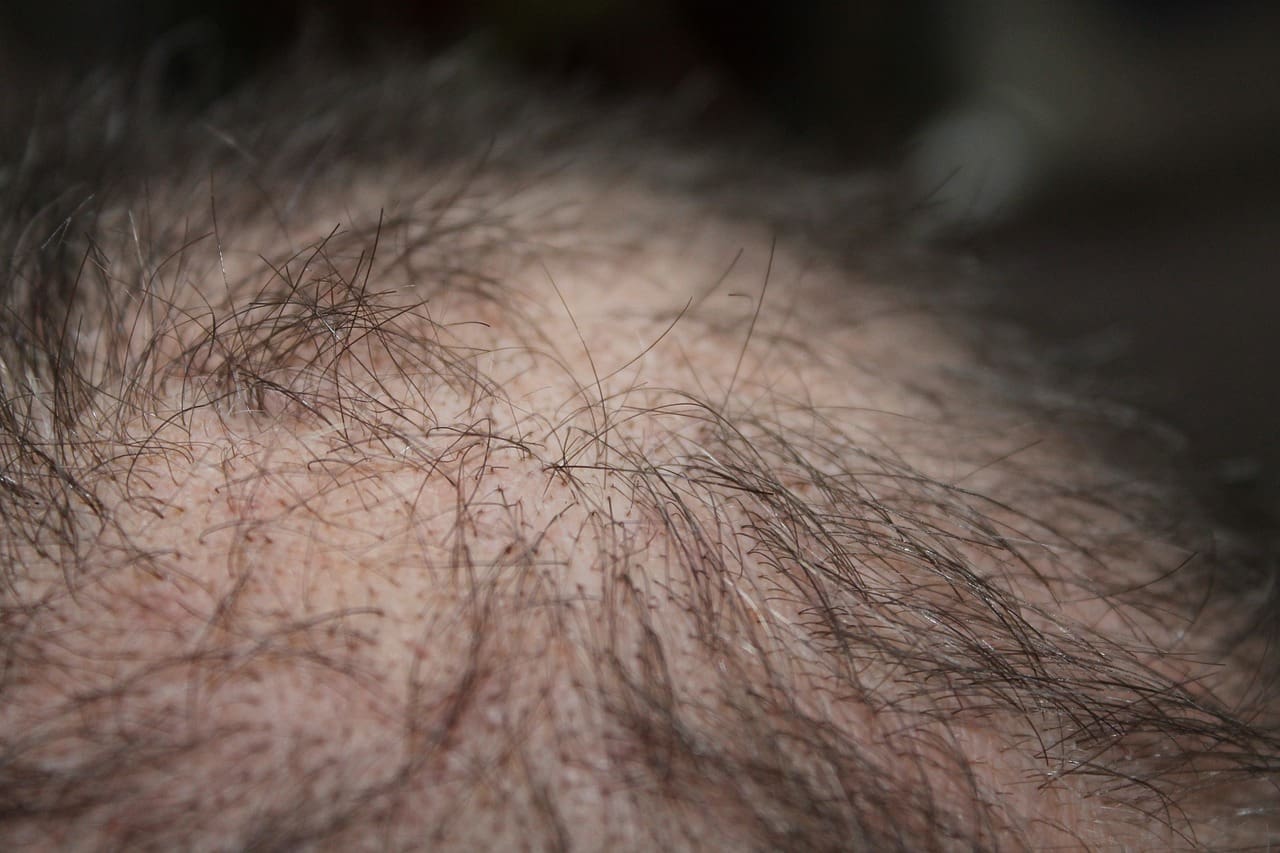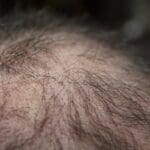
Are you struggling with hair loss and feeling self-conscious about your appearance? You’re not alone. Hair loss can have a significant impact on a person’s self-esteem and confidence. The stigma associated with hair loss can make it even more challenging to embrace your appearance and feel comfortable in your own skin. But don’t despair, there are strategies you can employ to overcome the stigma and reclaim your confidence.
One of the first steps in overcoming hair loss stigma is to understand the condition itself. Hair loss can occur due to various factors, including genetics, hormonal changes, medical conditions, and stress. By educating yourself about the different types of hair loss and their causes, you can gain a better understanding of your own situation and realize that it is a common issue faced by many individuals.
Societal norms and beauty standards play a significant role in perpetuating the stigma surrounding hair loss. The pressure to conform to a certain standard of beauty can be overwhelming, but it’s essential to challenge these norms. Remember that beauty comes in all forms, and there is no one-size-fits-all definition of attractiveness. By challenging societal norms, you can start to shift the narrative around hair loss and promote acceptance.
Changing perceptions is key to overcoming hair loss stigma. Individuals and organizations are working tirelessly to challenge stereotypes and promote a more inclusive definition of beauty. Initiatives that celebrate the diversity of beauty and challenge traditional notions of attractiveness are gaining momentum. By embracing and celebrating diversity, we can create a more accepting and inclusive society where hair loss is seen as just another variation of beauty.
The media also plays a significant role in shaping perceptions of hair loss. It’s important to recognize that the images we see in the media are often heavily edited and do not reflect the reality of most people’s appearances. By using the power of media to challenge stereotypes and showcase diverse representations of beauty, we can help break down the stigma surrounding hair loss.
Building self-confidence is a crucial aspect of overcoming hair loss stigma. It’s essential to focus on the things that make you unique and special, rather than dwelling on what you perceive as flaws. Find activities and hobbies that make you feel good about yourself and boost your self-esteem. Surround yourself with supportive and positive people who uplift you and remind you of your worth. Remember, confidence is not solely based on appearance but also on your talents, achievements, and inner qualities.
Seeking support is another vital step in overcoming hair loss stigma. There are numerous support groups, online communities, and resources available to help individuals cope with hair loss. Connecting with others who are going through similar experiences can provide a sense of belonging and understanding. Additionally, seeking professional help from medical and cosmetic experts can have a positive impact on your self-esteem and overall well-being.
Emotional support is equally important in navigating the emotional impact of hair loss. Friends, family, and therapists can provide a safe space for you to express your feelings and work through any negative emotions you may be experiencing. Remember, you are not alone, and reaching out for emotional support is a sign of strength.
In conclusion, overcoming hair loss stigma and reclaiming your confidence is possible. By understanding the condition, challenging societal norms, changing perceptions, building self-confidence, and seeking support, you can embrace your appearance and feel comfortable in your own skin. Remember, you are beautiful and worthy, regardless of your hair.
Understanding Hair Loss
Understanding Hair Loss
When it comes to hair loss, it’s important to have a clear understanding of the condition and its underlying causes. Hair loss can occur due to various factors, and knowing the different types of hair loss can help you better comprehend your own situation.
One common type of hair loss is male pattern baldness, also known as androgenetic alopecia. This type of hair loss is typically hereditary and is more prevalent in men. It is characterized by a receding hairline and thinning of the hair on the crown of the head.
Another type of hair loss is female pattern baldness, which affects women and is also influenced by genetic factors. Unlike male pattern baldness, female pattern baldness often leads to overall thinning of the hair rather than specific bald spots.
Alopecia areata is a condition where the immune system mistakenly attacks the hair follicles, resulting in patchy hair loss. This type of hair loss can occur in both men and women and can vary in severity.
Other factors that can contribute to hair loss include hormonal changes, certain medical conditions, stress, nutritional deficiencies, and certain medications. Understanding the potential causes of hair loss can help you identify any underlying issues and seek appropriate treatment.
By gaining a better understanding of the different types of hair loss and their causes, you can take a proactive approach in managing your condition. Whether it’s exploring treatment options or seeking emotional support, knowledge is key in overcoming the stigma associated with hair loss and reclaiming your confidence.
Challenging Societal Norms
Challenging Societal Norms
Societal norms and beauty standards play a significant role in perpetuating the stigma surrounding hair loss. In many cultures, thick and luscious hair is often associated with youth, health, and attractiveness. This narrow definition of beauty can create a sense of shame and embarrassment for individuals experiencing hair loss.
It is important to challenge these norms and broaden our understanding of beauty. Hair loss is a natural and common occurrence that can affect anyone, regardless of gender, age, or background. By challenging societal norms, we can promote acceptance and create a more inclusive environment where individuals feel comfortable and confident in their own skin.
To challenge these norms, it is crucial to educate ourselves and others about the diverse causes and experiences of hair loss. By understanding that hair loss can be caused by genetics, medical conditions, hormonal changes, or even stress, we can break down the stereotype that it is solely a result of aging or poor health.
Furthermore, it is important to recognize that beauty comes in many forms. Embracing diversity means celebrating all types of appearances, including those with hair loss. By highlighting individuals who proudly embrace their hair loss and showcasing their unique beauty, we can challenge the notion that hair defines attractiveness.
Challenging societal norms requires a collective effort. It involves questioning the messages portrayed in media and advocating for more inclusive representations of beauty. By promoting diversity and challenging stereotypes, we can create a society that values and accepts individuals with hair loss.
Changing Perceptions
Changing Perceptions
Find out how individuals and organizations are working to change the perception of hair loss and promote acceptance.
Hair loss has long been stigmatized in our society, with many individuals feeling self-conscious and experiencing a loss of confidence as a result. However, there is a growing movement to challenge these negative perceptions and embrace the beauty of diversity. Individuals and organizations are actively working to change the way society views hair loss and promote acceptance.
One way that perceptions are being changed is through education and awareness campaigns. By providing accurate information about the causes and prevalence of hair loss, these campaigns aim to dispel myths and misconceptions surrounding the condition. They highlight that hair loss is not a reflection of a person’s character or worth, but rather a natural occurrence that can happen to anyone.
Another important aspect of changing perceptions is through representation. By showcasing individuals with hair loss in media, advertising, and other forms of visual representation, the stigma surrounding hair loss can be challenged. Seeing diverse and confident individuals who embrace their appearance despite hair loss can inspire others to do the same.
Support groups and online communities also play a crucial role in changing perceptions. These platforms provide a safe space for individuals with hair loss to share their experiences, seek advice, and find support from others who understand what they are going through. By connecting with others who have similar experiences, individuals can gain a sense of belonging and realize that they are not alone in their journey.
Furthermore, advocacy organizations are actively working to change societal norms and beauty standards. They are pushing for greater representation of individuals with hair loss in the fashion and beauty industry, as well as advocating for inclusive policies and practices. These efforts aim to challenge the narrow definitions of beauty and promote acceptance of all forms of appearance.
Overall, the work being done by individuals and organizations to change the perception of hair loss is crucial in promoting acceptance and empowering those who experience it. By challenging societal norms, increasing representation, and providing support, we can create a world where hair loss is seen as just another variation of beauty.
Celebrating Diversity
Celebrating Diversity
Learn about initiatives that celebrate the diversity of beauty and challenge traditional notions of attractiveness.
In a world that often promotes a narrow definition of beauty, initiatives that celebrate diversity are crucial in challenging societal norms and promoting acceptance. These initiatives aim to redefine beauty standards and empower individuals with different appearances, including those experiencing hair loss.
One such initiative is the “Beauty Beyond Hair” campaign, which highlights the beauty and strength of individuals with diverse hairstyles and showcases their unique stories. Through powerful imagery and personal narratives, this campaign aims to shift the focus from hair as a defining characteristic of beauty to embracing individuality and self-expression.
Another organization making waves in celebrating diversity is “Hair Equality,” a movement that advocates for equal treatment and opportunities for individuals with all types of hair. By challenging discriminatory practices and raising awareness about the importance of inclusivity, Hair Equality aims to create a more accepting and diverse society.
Additionally, fashion and beauty brands are also taking steps to celebrate diversity in their campaigns and advertisements. They are featuring models with varying hair types and showcasing the beauty of different hairstyles, including those associated with hair loss. By doing so, these brands are challenging traditional notions of attractiveness and promoting a more inclusive definition of beauty.
It is through these initiatives and campaigns that we can begin to break down the stigma surrounding hair loss and celebrate the diversity of beauty. By embracing individuality and challenging societal norms, we can create a world where everyone feels accepted and confident, regardless of their hair or appearance.
Media Representation
Media plays a significant role in shaping perceptions of hair loss. The way hair loss is portrayed in movies, TV shows, and advertisements can greatly influence society’s views and create stereotypes. Often, the media presents hair loss as something negative or undesirable, perpetuating the stigma surrounding it.
However, the media also has the power to challenge these stereotypes and promote acceptance. By featuring diverse representations of individuals with hair loss, the media can help normalize this condition and showcase the beauty and strength of those affected. It can also highlight the stories of individuals who have overcome the stigma and found confidence despite their hair loss.
One way media representation can challenge stereotypes is by featuring characters with hair loss in positive and empowering roles. This can help break the association between hair loss and weakness or lack of attractiveness. When viewers see characters with hair loss portrayed as confident, successful, and admired, it can shift their perceptions and challenge societal norms.
Additionally, the media can play a role in educating the public about the various causes and types of hair loss. By providing accurate information, debunking myths, and raising awareness, the media can contribute to a better understanding of the condition and reduce the stigma associated with it.
It is important for media outlets to be mindful of the impact their portrayals of hair loss can have on individuals. By avoiding negative stereotypes and embracing diversity, the media can create a more inclusive representation of beauty. This can ultimately help individuals with hair loss feel seen, accepted, and empowered.
Building Self-Confidence
Building self-confidence can be a challenging journey, especially when faced with the stigma associated with hair loss. However, there are practical tips and techniques that can help you regain your self-assurance and embrace your appearance, regardless of your hair loss.
One important aspect of building self-confidence is taking care of your overall well-being. This includes maintaining a healthy lifestyle by eating nutritious foods, exercising regularly, and getting enough sleep. When you prioritize your physical health, you not only feel better physically but also mentally, which can positively impact your self-esteem.
In addition to taking care of your physical health, it is crucial to focus on your mental and emotional well-being. Engaging in activities that bring you joy and fulfillment can boost your self-confidence. Whether it’s pursuing a hobby, spending time with loved ones, or practicing mindfulness and self-care, finding activities that make you feel good about yourself is essential.
Another tip to build self-confidence is to embrace your unique appearance. Hair loss does not define your worth or beauty. Instead of trying to hide or cover up your hair loss, consider experimenting with different hairstyles, accessories, or even embracing a bald look. Embracing your appearance as it is can be empowering and help you feel more confident in your own skin.
Furthermore, surrounding yourself with a supportive network of friends, family, or support groups can make a significant difference in your self-confidence journey. Sharing your experiences, fears, and triumphs with others who understand can provide a sense of validation and encouragement. Online communities and support groups specifically tailored to individuals experiencing hair loss can be valuable sources of support and guidance.
Lastly, practicing positive self-talk and challenging negative beliefs about yourself is crucial in building self-confidence. Replace self-critical thoughts with affirmations and focus on your strengths and accomplishments. Celebrate your uniqueness and remind yourself that you are more than your hair loss. By shifting your mindset and embracing self-acceptance, you can cultivate a strong sense of self-confidence.
Remember, building self-confidence is a journey that takes time and effort. Be patient with yourself and celebrate small victories along the way. With the right mindset and the implementation of these practical tips and techniques, you can reclaim your confidence and embrace your appearance despite hair loss.
Seeking Support
Seeking support is an essential step in overcoming the challenges of hair loss and the associated stigma. Fortunately, there are various avenues available to individuals who are looking for understanding, guidance, and empowerment.
Support groups are a valuable resource for individuals experiencing hair loss. These groups provide a safe and non-judgmental space where individuals can share their experiences, exchange advice, and find solace in the company of others who can relate to their struggles. Support groups can be found in local communities, facilitated by organizations or healthcare providers, or online through forums and social media platforms.
In addition to support groups, online communities offer a wealth of information and support for individuals dealing with hair loss. Websites and forums dedicated to hair loss provide a platform for individuals to connect, share stories, and access resources. These communities often feature discussions on coping strategies, treatment options, and personal experiences, offering a sense of belonging and understanding.
Resources specifically tailored to help individuals cope with hair loss and stigma are also available. These resources can include educational materials, self-help books, and online guides that provide practical advice and emotional support. Additionally, there are organizations that offer specialized services such as counseling, therapy, and workshops to help individuals navigate the emotional and psychological impact of hair loss.
Remember, seeking support is not a sign of weakness but a courageous step towards reclaiming your confidence. Whether it’s through support groups, online communities, or dedicated resources, reaching out and connecting with others who understand can make a significant difference in your journey towards self-acceptance and empowerment.
Professional Help
Professional Help
When it comes to dealing with hair loss, seeking professional help can make a significant difference in both physical and emotional well-being. There are various medical and cosmetic treatments available that can help address the underlying causes of hair loss and promote hair regrowth.
Medical treatments for hair loss often involve medications such as minoxidil and finasteride. Minoxidil, available as a topical solution or foam, is applied directly to the scalp to stimulate hair growth. Finasteride, on the other hand, is an oral medication that works by blocking the production of a hormone linked to hair loss. These treatments can be effective in slowing down hair loss and promoting regrowth in some individuals.
Cosmetic treatments, such as hair transplantation, can also be considered as a viable option. Hair transplantation involves taking hair follicles from areas of the scalp with adequate hair growth and transplanting them to areas experiencing thinning or baldness. This procedure can provide natural-looking results and restore a fuller head of hair.
Seeking professional help for hair loss not only addresses the physical aspects but also has a positive impact on self-esteem. Hair loss can have a significant emotional toll, affecting one’s self-confidence and overall well-being. By taking proactive steps to address hair loss through professional treatments, individuals can regain their self-esteem and feel more confident in their appearance.
It’s important to consult with a qualified healthcare professional or a dermatologist specializing in hair loss to determine the most suitable treatment options based on individual needs and circumstances. They can provide expert guidance and tailor a treatment plan that aligns with specific goals and expectations.
Remember, seeking professional help is not a sign of weakness but a proactive step towards reclaiming your confidence and embracing your appearance despite hair loss. With the right treatment and support, it’s possible to overcome the stigma associated with hair loss and regain a positive self-image.
Emotional Support
Emotional support plays a crucial role in helping individuals overcome the emotional impact of hair loss. When faced with the challenges of hair loss, having a strong support system can provide comfort, understanding, and encouragement. Friends, family, and therapists can offer the empathy and guidance needed to navigate the emotional journey.
Friends and family members can offer a listening ear and a shoulder to lean on during difficult times. They can provide a safe space to express emotions and share concerns. Their support can help individuals feel validated and understood, reducing feelings of isolation and loneliness. Having loved ones who accept and embrace their appearance can boost self-esteem and foster a positive self-image.
In addition to support from friends and family, seeking professional help from therapists or counselors can be beneficial. These professionals are trained to provide guidance and support for individuals struggling with the emotional impact of hair loss. They can help individuals navigate their emotions, develop coping strategies, and build resilience. Therapists can also assist in addressing any underlying psychological issues that may arise as a result of hair loss.
Support groups and online communities can also be valuable resources for emotional support. Connecting with others who are going through similar experiences can provide a sense of belonging and understanding. Sharing stories, advice, and encouragement within these communities can help individuals feel less alone and more empowered to overcome the emotional challenges of hair loss.
It is important for individuals experiencing hair loss to remember that they are not alone and that seeking emotional support is a sign of strength. By reaching out to friends, family, therapists, and support groups, individuals can find the support they need to navigate the emotional impact of hair loss and reclaim their self-confidence.
Frequently Asked Questions
- What are the different types of hair loss?
There are several types of hair loss, including androgenetic alopecia (pattern baldness), alopecia areata (patchy hair loss), telogen effluvium (temporary shedding of hair), and traction alopecia (hair loss due to pulling or tension).
- What causes hair loss?
Hair loss can be caused by various factors such as genetics, hormonal changes, certain medical conditions, medications, stress, and excessive styling or treatments.
- How does societal norms contribute to the stigma surrounding hair loss?
Societal norms and beauty standards often prioritize a full head of hair as a symbol of youth, attractiveness, and vitality. This can lead to stigmatization of individuals experiencing hair loss, making them feel less confident and accepted.
- How can perceptions of hair loss be changed?
Perceptions of hair loss can be changed through education, awareness campaigns, and promoting acceptance of diversity. By challenging traditional notions of beauty and celebrating different appearances, we can create a more inclusive society.
- What role does media play in shaping perceptions of hair loss?
The media often portrays a narrow definition of beauty, which can perpetuate stereotypes and stigmatization. However, media can also be a powerful tool for challenging these norms and increasing representation of diverse individuals with different hair types and conditions.
- How can I build self-confidence despite hair loss?
Building self-confidence involves embracing your appearance, focusing on your strengths, practicing self-care, seeking support from loved ones, and exploring techniques such as styling, wigs, or other hair alternatives that make you feel comfortable and confident.
- Are there support groups or online communities for individuals with hair loss?
Yes, there are support groups and online communities where individuals with hair loss can connect, share experiences, and find support. These communities provide a safe space to discuss concerns, seek advice, and find encouragement.
- What medical or cosmetic treatments are available for hair loss?
There are various medical and cosmetic treatments available for hair loss, including medications, hair transplant surgery, laser therapy, and scalp micropigmentation. It is best to consult with a healthcare professional to determine the most suitable option for your specific condition.
- How important is emotional support in overcoming the impact of hair loss?
Emotional support from friends, family, and therapists plays a crucial role in overcoming the emotional impact of hair loss. Having a strong support system can provide comfort, understanding, and help in building resilience and self-acceptance.







Leave a Reply